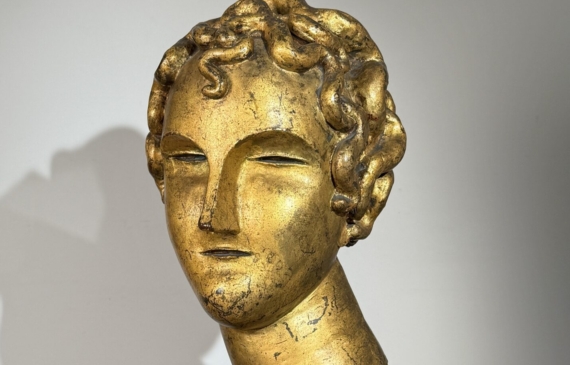
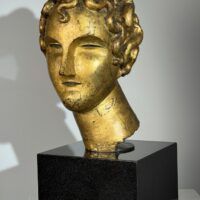
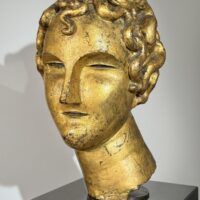
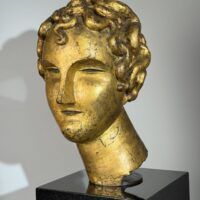
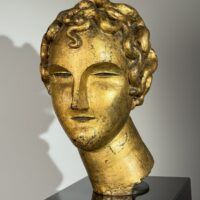
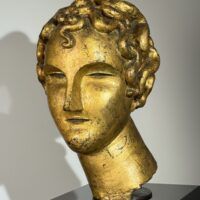
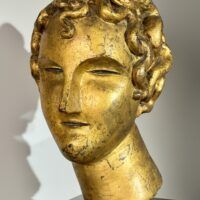
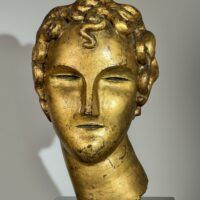
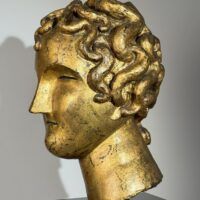
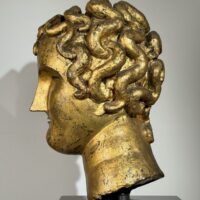
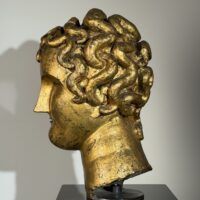
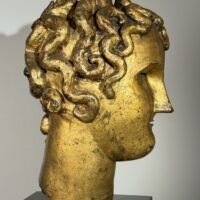
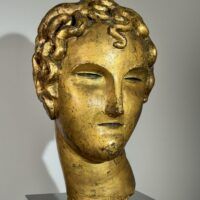
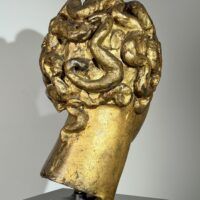
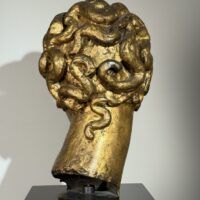
Elie Nadelman (American, 1882-1946)
Head of a Boy, c. 1906
16 ⅝ H. x 10 ¼ W. x 11 ½ D. inches
Bronze, parcel gilt surface
Marble base: 7 ¼ H. x 10 ½ W. x 10 ½ D. inches
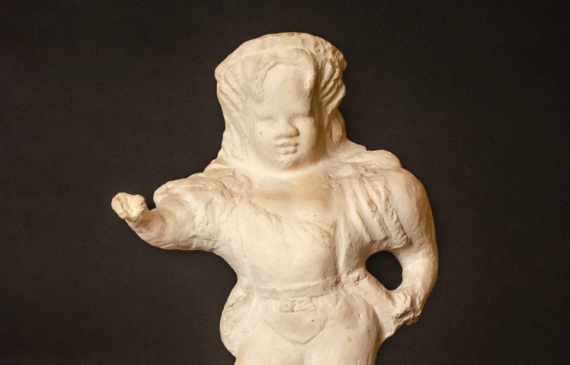

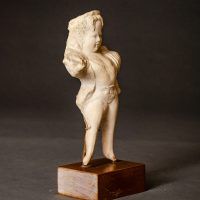
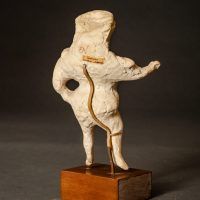
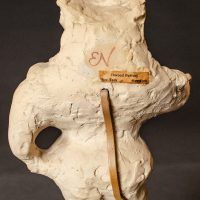
Elie Nadelman
Polish-American, 1882–1946
Circus Figure, circa 1945
Plaster
8 ¼ H. inches
Signed: EN on reverse
Inscribed on a label on the reverse:
Inwood Pottery New York #4
Provenance:
Zabriskie Gallery, New York, May 6, 1970
Private collection since.
Exhibitions:
Nadelman Memorial Exhibition, MoMA, 1948.
Elie Nadelman, Sculptor of Modern Life, Whitney Museum, 2003.
Literature:
Barbara Haskell, Elie Nadelman, Sculptor of Modern Life, Whitney Museum, New York, 2003, p.190, fig. 212.
This rare example has been in a private collection for nearly 50 years, exhibited twice, and is referenced in the Whitney Museum’s book on Nadelman.
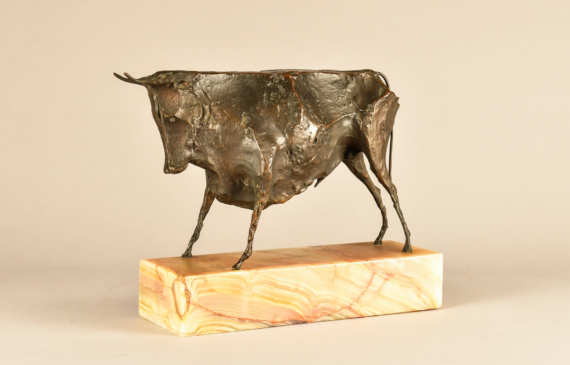
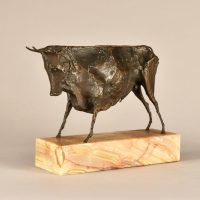
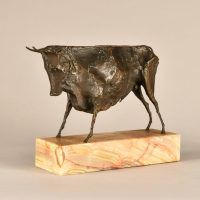
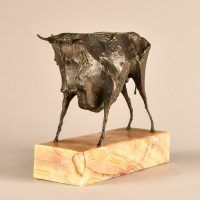
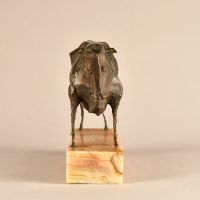
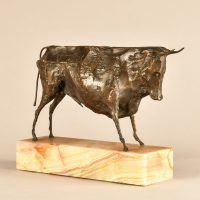
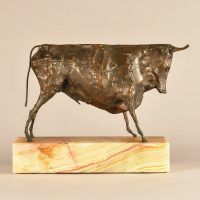
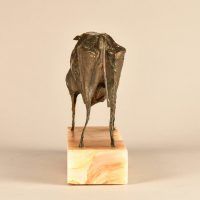
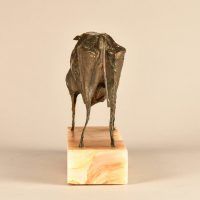
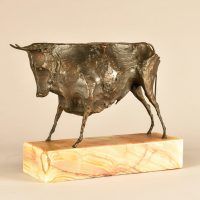
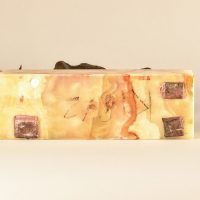
Elie Nadelman
Polish-American, 1882–1946
Standing Bull, 1915
Bronze with brown patina
6 ⅝ H. x 11 ¼ W. inches
Elie Nadelman had an affinity for the arts his entire life. His father was a jeweler and his mother’s family contained artists, musicians, and writers, all inspiring a passion for creativity within the young Nadelman. He began his career studying in his hometown of Warsaw at its Art Academy, taking a one year respite to serve in the Imperial Russian Army, where he mostly spent his time teaching officers’ children how to draw and painting the soldiers’ living quarters. After this, he spent some time in Warsaw and Krakow, but ultimately ventured out of the country in search of inspiration in Munich. Here, he came into contact with the Glyptothek museum, which had an outstanding collection of antiquities as it was founded in the early 19th century by the King of Bavaria to house his collection of Roman and Greek sculptures. Thus began Nadelman’s affinity for the classical style associated with these ancient cultures, a pension that arose in the majority of his works at some level. By 1904, Nadelman migrated to Paris, where he fell in with famed avantgarde intellectuals like Gertrude and Leo Stein, Pablo Picasso, and Henri Matisse, to name a few. Despite being surrounded by a bustling arts scene, he was never formally trained at the Beaux Arts academy nor as an apprentice under any master, he simply created.
At a time when his contemporaries were rejecting classicism as an overplayed idiom, Nadelman instead chose to take his own path. Rather than adhering to the strict conventions of the academic style or embracing the new wave of artistic genres, he tried to incorporate the classical into his own work while producing something new that reflected himself as an artist and the context in which he was living. He was forced to leave Paris in 1914 when World War I commenced, seeking refuge in New York City. Although his initial reaction to the United States was disdain, he grew to love the optimism of the American people. With the help of influencers like Gertrude Vanderbilt Whitney and Alfred Stieglitz, Nadelman quickly gained notoriety and popularity in the country.